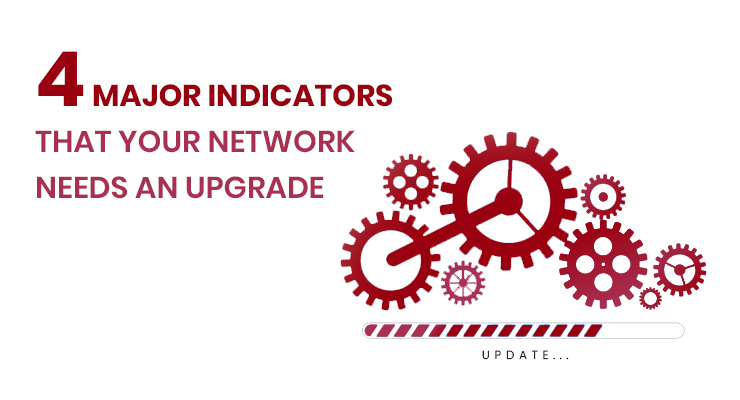Today’s technology innovations are enabling businesses to work faster and smarter than ever before. Cloud and mobility are helping companies create flexibility, scalability and productivity never seen before. Their opportunity is there to enable your business, but an ageing network can be like an anchor dragging your organization down. On the other hand, updating your network can seem like a costly and inconvenient endeavour that would interrupt business operations. Companies should do a risk/benefit analysis to determine if it is time to invest in the resources needed to overhaul their network. Watch for these signs as they are indicators that it’s time to update your organization’s network.
- The network is bending under the weight of devices.
The network is bending under the weight of devices. Network management was much easier when only a set amount of desktop computers was on an organization’s network. Mobility in the modern workplace has changed the paradigm. Now, users expect that they will not be tethered to a single location. This creates additional demands on the average enterprise network, with more devices using additional bandwidth, Network managers’ jobs are tougher than they’ve ever been. Today’s network professionals need the right technology and tools to manage the colossal number of devices linked to their network. Trying to solve continual bandwidth issues with aging network infrastructure, in particular, wireless networks that were installed when networking mapping was in its infancy, generally leads to higher costs and complexity.
- Apps keep malfunctioning because your infrastructure doesn’t work well with modern technology
Networks that were built even 5 years ago were not set up to support the number of applications on networks today. They were kept on servers and could be monitored, but as organizations have grown less reliant on a single location to communicate and execute tasks, apps have become integral to modern networking. Outdated network infrastructure simply lacks the bandwidth to support the apps that keep the organization running. Consequently, apps are likely to stall, stop working, or even lose your data and cause damage to the actual app.
- Network maintenances leave no time for innovation
A base amount of maintenance is to be expected with an enterprise-grade network. However, if your team is consistently putting out fires with end users continuing to complain about their inability to be productive, you should ask yourself if holding on to aging tech is actually costing the company more. If you are continually maintaining old infrastructure and facing end-of-life equipment, you need to take a hard look at the TCO and consider that an upgrade may be imminent.
- Latency issues are persistent
During especially busy hours of operation or peak periods (e.g. holiday shopping or an article going viral), it’s normal for networks to experience delays. But if network latency is becoming frequent, it’s signalling that the time for upgrading is here. Your organization will hit a tipping point when employees can’t get their work done and customers become fed up with delays in your applications. Newer network equipment can deliver faster speeds with a better ability to handle traffic spikes, keeping your end users happy and productive.


